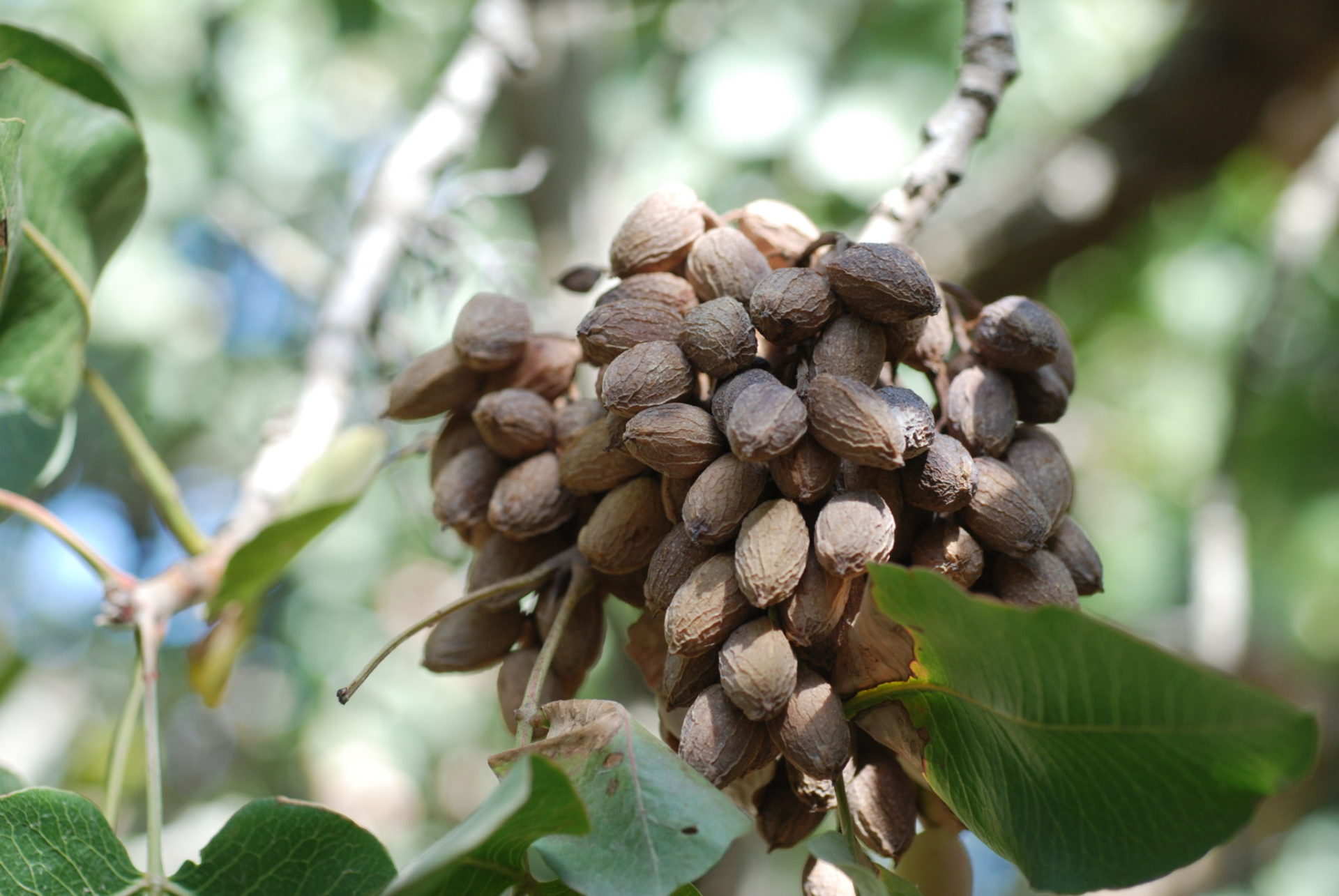
Collapse of nut clusters is a very visual message that a pistachio orchard has been invaded by the Botryosphaeria dothidea pathogen.
While there may have been signs of this disease earlier in the summer, by August the infections are highly visible and will lead to crop damage and loss of yield.
UC Davis plant pathologist Themis Michailides said that collapse of nut clusters would be an obvious sign that infections have spread. According to the UC Davis IPM website, infections in leaves start as small black lesions that eventually coalesce and cause leaf blight. When shoot infection begins, leaves wilt and die along with the shoot. Leaf stem and mid rib infections are very common and usually are the first symptoms to appear during an epidemic of panicle and shoot blight in an orchard as blighted shoots while leaves and clusters turn brown. Leaf lesions are more likely in the northern growing areas, while clusters are more likely to be affected in the north and south.
From August through October, large necrotic lesions with pycnidia in the center develop on leaves of male and female trees. Infection of petioles start as longitudinal black areas and cause blight of the entire leaf or of individual leaflets and defoliation. Scars of abscised buds or leaves can also be infected, resulting in sunken cankers above and below the scars. Infected rachises bearing pycnidia can hang in the tree and be a source of inoculum in the orchard. Cankers can also be a source of inoculum.
Spores spread in water, but they can also be moved in an orchard via birds or insects. Stink bug wounds are another avenue for infection. Symptoms of the disease are triggered to develop by temperatures over 86 degrees F while infection can occur at 50 degrees F and above.
Michailides said growers who have a history of infection in their orchard should be monitoring for signs of infection (unusual high number of hanging rachises) and plan a fungicide spray program, applying at the proper time. Pre-season testing with BUDMON and in-season with ONFIT in mid-summer can help with fungicide application decisions.
Pruning blighted shoots and panicles, shoots with cankers, dead and dying wood, and removing infected wood from the orchard can help reduce or eliminate inoculum for a few years. During late summer, after harvest and during dormancy, prune out infected shoots 2 inches past blighted margins.











